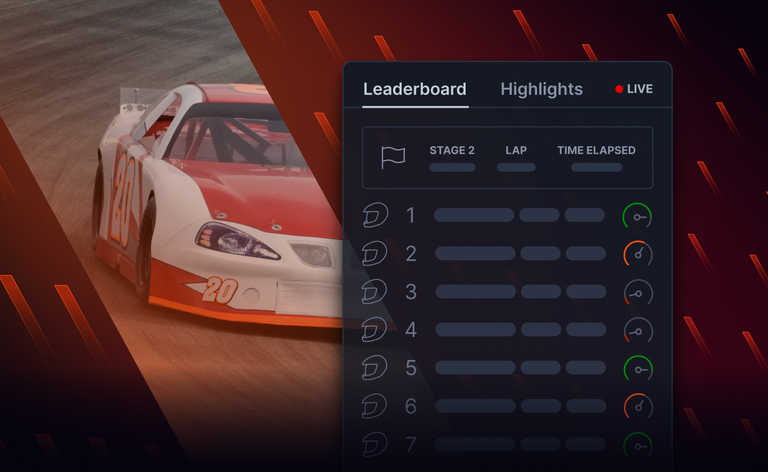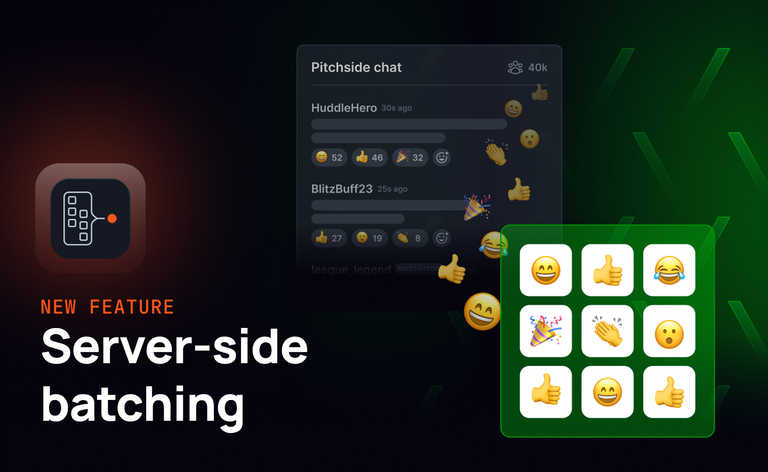The Australian Open (AO) is one of the world’s premier annual sporting events. According to Tennis Australia, the 2024 edition - held over three weeks - reached over 558 million unique global viewers, a 57% increase from the previous year, and accumulated more than 2.17 billion cumulative viewers, up 24%. The event also attracted a record-breaking 1,110,657 fans to Melbourne Park.
The 2025 edition is taking place from January 6th to 26th, and during the tournament, the AO team at Tennis Australia is navigating one of the most intense periods of their calendar year. Beyond the action on the court, they face the significant challenge of delivering a seamless and consistent digital experience to their global audience. As the tournament grows in scale and sophistication, so too does the complexity of managing realtime data delivery and monetizing the digital audience at scale.
Realtime data delivery: A mission-critical component
Realtime data delivery is at the heart of the AO’s digital strategy. For fans, it ensures instant access to live scores, match updates, and interactive experiences. Continuous and reliable data streams are also essential for broadcasters and sponsors for powering their offerings - from on-screen graphics to live digital content - as well as for Tennis Australia to fulfil their commercial obligations. Any disruptions can lead to dissatisfied fans, strained relationships with stakeholders, and potential revenue losses.
Achieving realtime data delivery at scale is no small feat, especially given the unpredictability of traffic during events (with the inevitable peaks during opening matches, and finals), where surges are the norm and require built-in elasticity to handle the dynamic demand seamlessly.
The global scale of the AO Digital Audience
As well as responding to extreme traffic peaks, the AO’s infrastructure must deliver for its global audience. As well as Australia, the tournament's digital platforms were most popular in the USA, UK, Canada and Germany.
Delivering latency targets on a global scale adds another layer of complexity to delivering realtime data to fans. Whether fans are accessing AO’s digital experiences from Australia, or the USA, their expectations are the same.
This requires meticulous planning and ensuring redundancy across multiple regions. And in some regions, this means having fallback protocols in place to support realtime data streaming where older devices mean that WebSocket - the preferred protocol for streaming data to client devices - isn’t always supported.
Thankfully, this challenge has been met, and over the years the AO’s digital channels have amassed a significant following, with millions subscribing to realtime updates, live scores, and exclusive content. The 2024 edition delivered a 10 percent increase in the combined audience for the official website and app. Despite this growth, the AO has served fans with realtime data, wherever they are.

A blueprint for reliable digital infrastructure
The pressures faced by the AO are shared by many major sports events worldwide. Organisers must juggle the dual priorities of ensuring global realtime reliability and optimising infrastructure costs, all while delivering a seamless experience to fans, broadcasters, and sponsors alike. As digital engagement continues to grow, so too will the expectations of audiences and stakeholders.
So, how has Tennis Australia made reliable realtime data delivery possible for the AO?
Instead of tackling the challenge themselves, in 2018, Tennis Australia sought a technology provider capable of meeting their global broadcast latency targets at scale, delivering consistent and accurate live scores without interruptions, and ensuring redundancy across multiple regions to achieve a first-class experience for their global fan-base.
Ably met these requirements with a robust realtime messaging platform that efficiently delivered live scores and updates to a global audience. Our solution ensures that fans, broadcasters, and sponsors receive timely and accurate information, enhancing the overall AO experience. With Ably's reliable infrastructure, Tennis Australia has continued to grow, confident in the platform’s ability to support their needs.
The AO case highlights the importance of investing in cutting-edge technology. By integrating advanced realtime infrastructure, they have been able to ensure seamless delivery of updates, even during periods of peak demand. This technology not only supports fan engagement but also ensures that the tournament’s commercial stakeholders receive the data they rely on for their own operations.
Partnering with Ably has allowed Tennis Australia to avoid the challenges of building complex realtime infrastructure. Instead, they’ve entrusted Ably to manage the scalability and growth of the infrastructure, enabling them to focus on delivering engaging content and enhancing the fan experience. It has also enabled Tennis Australia to focus on continuously driving innovation such as 'Beyond Tennis', the world's first generative AI-powered tennis league, and the AO BLUEZONE.
This is a great example of how event organisers can use the right technologies and strategies to ensure their digital infrastructure meets the demands of any challenge, regardless of its scale or complexity.
Interested to learn more about Ably?
Matthew O’Riordan is CEO and Co-founder at Ably, a global realtime experiences platform that empowers developers to build highly scalable and engaging applications. Ably’s technology enables applications to exchange data in realtime, ensuring everyone stays on the same page, regardless of location or device. You can find out more here about how Ably helps companies with fan engagement - including Tennis Australia and NASCAR.



